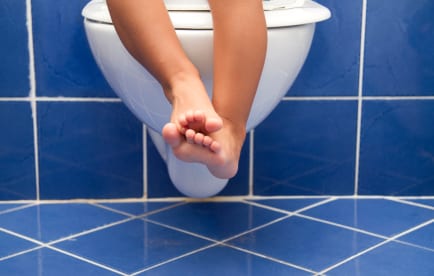Most children are ready to begin potty training between their second and third birthdays. Potty training is a complex process. To potty train successfully, a child must reach a certain level of physical maturity and master a specialized set of skills. This usually happens between 18 and 30 months of age.
Time Frame
Potty training doesn’t happen instantaneously. In fact, potty training is a process. Once potty training is started, it can take from three to six months for a child to be trained during the day completely. By 36 months of age, 98 percent of children are daytime potty trained. Since children can be deep sleepers, it’s not uncommon for them to wet the bed at night. Fortunately, by 6 years old, 90 percent of children stay dry through the night.
Signs of Readiness
Age is important in determining when to start potty training, but it is not the only factor that should be considered. Starting to potty train a child who is not ready can be problematic. In addition to being uninterested in using the potty, children whose parents start potty training before the child is ready may be uncooperative and refuse to engage in potty training. A child is likely ready to begin potty training when she stays dry for a few hours at a time, is able to pull down her pants on her own and communicates the need to eliminate or expresses that she just eliminated in her diaper. Children who are ready to begin potty training are able to follow simple instructions and have a desire to please their parents.
Types of Training
There are several ways you can potty train your child. One method of potty training is called “elimination communication.” While elimination communication can be used to train toddlers, it is often used to train infants. It involves understanding the child’s elimination pattern and how she communicates her need to eliminate. When a parent suspects her child needs to eliminate, she places her on the potty and makes a “sssss” sound to teach her to associate elimination with the sound she is making. Modeling is another method of potty training. Allowing your child to see you use the potty, while talking her through what you are doing, can be an effective potty training tool. After your child sees you go, sit her on the potty and encourage her to eliminate as you did.
Considerations
Potty training takes a lot of discipline from both the parent and the child. For potty training to be successful, there must be consistency in how often the child is placed on the potty, and potty use must be incorporated into his daily routine. If you’re planning on moving, are about to have a baby or are having any other major lifestyle change, it’s best to avoid potty training until your child has had a chance to adapt to the changes in his routine and environment.
Warnings
When potty training, accidents will happen. Punishing your child for soiling himself can harm his self-esteem and may cause regression. Instead of punishing him, along with the natural consequence of being wet or dirty, have your child help you clean up by putting dirty clothes in the hamper and getting fresh clothes.





